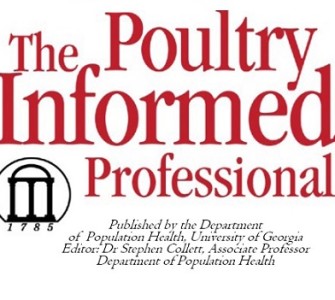Get the most from your ELISA tests
Most poultry integrators turn to ELISA tests to get a quick and easy read on a flock’s health status. “But the results are only as good as the quality of the samples,” reminds Andrea Zedek, DVM, MAM, ACPV, senior manager, global veterinary support, Zoetis Inc.
To help ensure accurate results with ELISA — the enzyme-linked immunosorbent assay — Zedek advises several best practices:
Start by using clean and sterile equipment for sampling, and take samples from randomly selected, normal birds throughout the house. Collect about 1.5 to 3 mL of blood in a syringe and transfer it to a 110 mm tube until the tube is ½ to ¾ full, she says.
Keep tubes slanted and at room temperature until the blood has clotted and the serum separates, which usually takes about 2 to 4 hours. The tubes should then be refrigerated or kept cool with ice packs and delivered to the diagnostic lab, preferably within 12 hours.
For routine monitoring, provide the lab with 10 to 15 serum samples per flock. If samples are being collected due to an outbreak, 20 to 30 samples per flock may be needed, Zedek says, noting that it’s always a good idea to collect a few extra samples.
“If you’re collecting samples for routine vaccine monitoring, keep in mind that it usually takes at least 7 to 10 days for the bird’s immune system to respond to a vaccine. Ideally, collect samples before vaccination, then again at 14 to 21 days after vaccinating the flock,” (Figure 1), Zedek continues.

Some vaccinations, such as killed or inactivated vaccines, may require a longer waiting period after vaccination before the samples are taken, she notes.
For those performing the ELISA test, it’s critical to follow the manufacturer’s instructions for ambient-temperature requirements, incubation time and plate washing. To get accurate results, it’s also extremely important to use proper pipetting technique when mixing and dispensing samples and reagents, Zedek continues.
“Always clean, calibrate and maintain all laboratory equipment, including washers, readers and pipettes,” she says. Also, never use contaminated samples for an ELISA test — indicated by a foul smell — or samples that contain heavy hemolysis, indicated by a red color. Good quality serum should be clear and slightly golden in color — similar to the color of white wine.
Reference sera
Zedek also advises continually monitoring the ELISA technique, as well as kit quality, by developing an in-house pool of positive reference sera. Medium-titered serum should be collected from flocks in the operation for each assay that the lab routinely performs, which might include Newcastle disease virus or infectious bronchitis virus.
Pool, aliquot and freeze the samples. Each day ELISA is performed, thaw the reference sample aliquot and use it in three to five wells of the ELISA plate. The mean titer and geometric mean titer of the reference samples should be consistent over time, she says.
“If you find highly variable antibody titers, it could indicate that your ELISA technique is inconsistent or you may have ELISA kit problems,” Zedek says.
Interpreting ELISA results isn’t always easy, she acknowledges. It requires experience gained by comparing a current flock’s results to previous ELISA and performance results. Only flocks of a similar age and vaccination program within the same complex should be compared. Toward this end, a baseline, which is the normal range of antibody titers for each ELISA assay in the operation, must be established.
‘Establish baselines’
When set up correctly, the ELISA software will calculate the baseline for each assay, and alert the user if the current flock’s results are out of the expected range. “Once you establish baselines, it’s much easier to monitor changes that may affect bird health and performance,” she adds.
The ELISA software further allows the user to sort and evaluate data. Consistently entering the same identifying characteristics for each flock, such as the complex, vaccination program, breed and other information will allow comparisons to be made using each variable. Adding more information into the software will only enhance the ability to make better decisions about health and management programs, Zedek says.
Posted on July 15, 2014
















